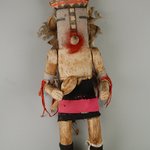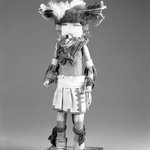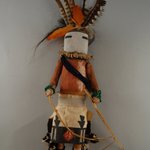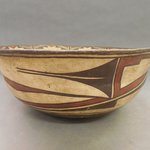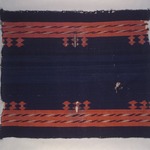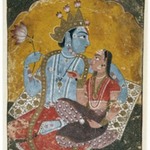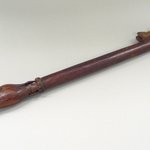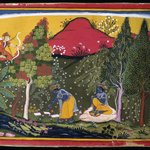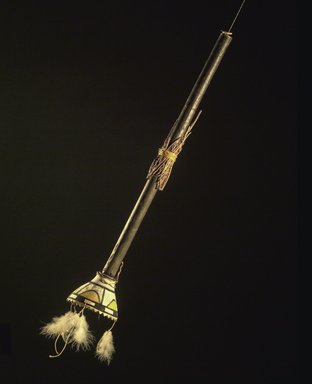
Dance Flute
Arts of the Americas
Among some Pueblo groups of the southwestern United States, supernatural beings that represent a life force or the embodiment of natural phenomena such as the sun, the moon, plants, animals, or insects are called Kachinas. During complex, multistage rituals integrating music and dance that are performed in ceremonial calendrical cycles, men don the masks, clothing, and paraphernalia of these spirits and are believed to actually become them.
Kachina dolls, such as this example of Paiyatemu, the Zuni Sun Youth, represent these beings and are given to audience members during the ceremonies and dances. In the corn-grinding ceremony of the Zuni Summer Dance, four Paiyatemu Kachinas play bell-shaped flutes, similar to the one seen here, to accompany singing by Corn Maidens kneeling at metates (grinding stones).
Entre algunos grupos Pueblo del sudoeste de los Estados Unidos, seres sobrenaturales que representan fuerzas de vida o la encarnación de fenómenos naturales, como el sol, la luna, plantas, animales, o insectos son llamados Kachinas. Durante complejos rituales de varias etapas, que integran música y danza y que se realizan en ciclos ceremoniales dictados por el calendario, los hombres se ponen las máscaras, vestimentas y parafernalia de estos espíritus y se cree que realmente se convierten en ellos. Las muñecas kachina, como este ejemplo de Paiyatemu, el Joven Sol Zuni, representan a estos seres y son regaladas a la audiencia durante las ceremonias y danzas. En la ceremonia del molido del maíz, de la danza del verano Zuni, cuatro Kachinas Paiyatemu tocan flautas acampanadas, similares a la que se aprecia aquí, para acompañar el canto de las Doncellas del Maíz arrodilladas frente a los metates (piedras de moler).
Kachina dolls, such as this example of Paiyatemu, the Zuni Sun Youth, represent these beings and are given to audience members during the ceremonies and dances. In the corn-grinding ceremony of the Zuni Summer Dance, four Paiyatemu Kachinas play bell-shaped flutes, similar to the one seen here, to accompany singing by Corn Maidens kneeling at metates (grinding stones).
Entre algunos grupos Pueblo del sudoeste de los Estados Unidos, seres sobrenaturales que representan fuerzas de vida o la encarnación de fenómenos naturales, como el sol, la luna, plantas, animales, o insectos son llamados Kachinas. Durante complejos rituales de varias etapas, que integran música y danza y que se realizan en ciclos ceremoniales dictados por el calendario, los hombres se ponen las máscaras, vestimentas y parafernalia de estos espíritus y se cree que realmente se convierten en ellos. Las muñecas kachina, como este ejemplo de Paiyatemu, el Joven Sol Zuni, representan a estos seres y son regaladas a la audiencia durante las ceremonias y danzas. En la ceremonia del molido del maíz, de la danza del verano Zuni, cuatro Kachinas Paiyatemu tocan flautas acampanadas, similares a la que se aprecia aquí, para acompañar el canto de las Doncellas del Maíz arrodilladas frente a los metates (piedras de moler).
CULTURE
A:shiwi (Zuni Pueblo)
MEDIUM
Wood, gourd, plant fibers, pigment, feathers, cotton cloth
DATES
late 19th century
DIMENSIONS
24 1/2 x 4 1/4 in. (63 x 11.6 cm) (show scale)



COLLECTIONS
Arts of the Americas
ACCESSION NUMBER
03.325.4700
CREDIT LINE
Museum Expedition 1903, Museum Collection Fund
CATALOGUE DESCRIPTION
This long, elegant flute is made from a sound piece of wood with a bell shaped gourd painted in black, yellow, blue and white. Sprigs of fir are tied around the middle.
EXHIBITIONS
MUSEUM LOCATION
This item is not on view
CAPTION
A:shiwi (Zuni Pueblo). Dance Flute, late 19th century. Wood, gourd, plant fibers, pigment, feathers, cotton cloth, 24 1/2 x 4 1/4 in. (63 x 11.6 cm). Brooklyn Museum, Museum Expedition 1903, Museum Collection Fund, 03.325.4700. Creative Commons-BY (Photo: Brooklyn Museum, 03.325.4700.jpg)
IMAGE
overall, 03.325.4700.jpg. Brooklyn Museum photograph
"CUR" at the beginning of an image file name means that the image was created by a curatorial staff member. These study images may be digital point-and-shoot photographs, when we don\'t yet have high-quality studio photography, or they may be scans of older negatives, slides, or photographic prints, providing historical documentation of the object.
RIGHTS STATEMENT
Creative Commons-BY
You may download and use Brooklyn Museum images of this three-dimensional work in accordance with a Creative Commons license. Fair use, as understood under the United States Copyright Act, may also apply.
Please include caption information from this page and credit the Brooklyn Museum. If you need a high resolution file, please fill out our online application form (charges apply).
For further information about copyright, we recommend resources at the United States Library of Congress, Cornell University, Copyright and Cultural Institutions: Guidelines for U.S. Libraries, Archives, and Museums, and Copyright Watch.
For more information about the Museum's rights project, including how rights types are assigned, please see our blog posts on copyright.
If you have any information regarding this work and rights to it, please contact copyright@brooklynmuseum.org.
RECORD COMPLETENESS
Not every record you will find here is complete. More information is available for some works than for others, and some entries have been updated more recently. Records are frequently reviewed and revised, and we welcome any additional information you might have.
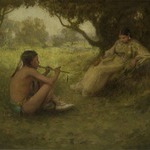
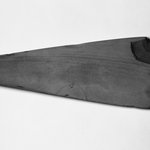
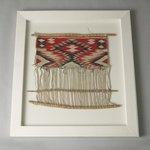
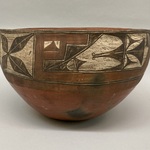
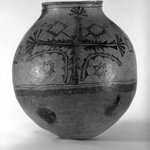


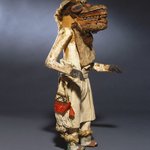
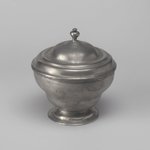

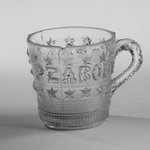
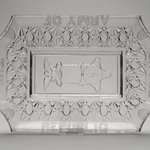
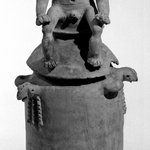

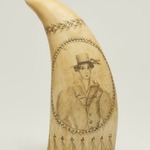



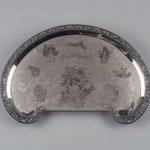
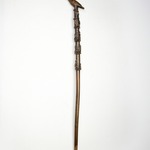
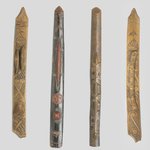
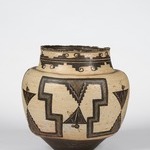

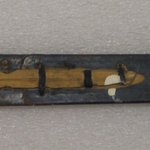
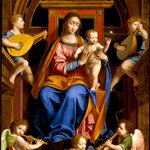
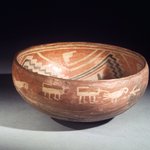


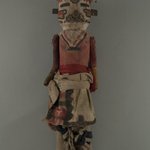

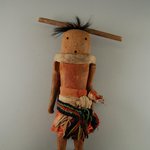

![Kachina Doll (Pakwen [Clown])](https://d1lfxha3ugu3d4.cloudfront.net/images/opencollection/objects/size2_sq/CUR.03.325.4606_front.jpg)
